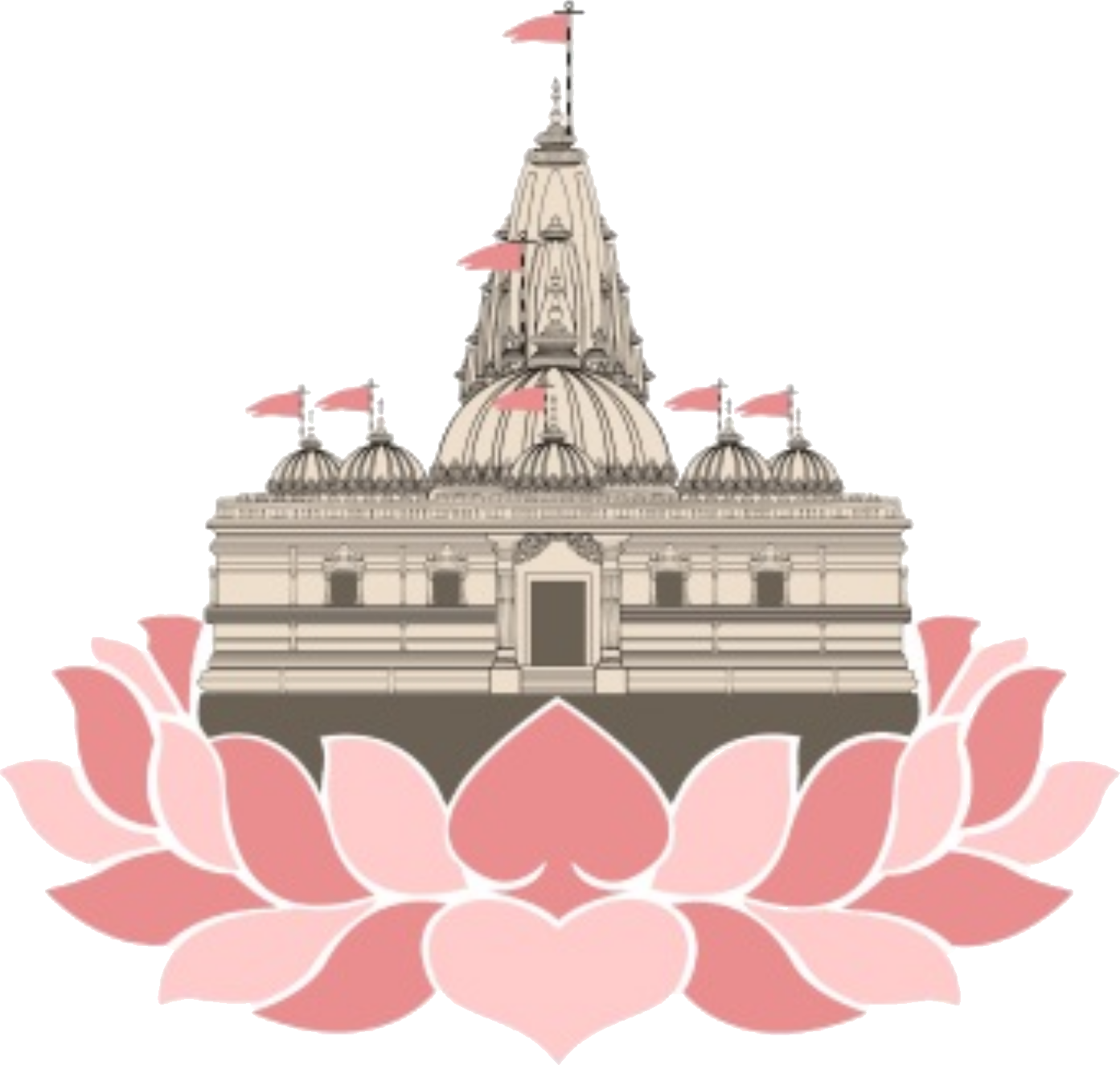Panchayatan
Whilst Shree Krishna Mandir appears as one structure, it is in fact a complex of five temples dedicated to the five deities; Vishnu (here in the form of Krishna), Shiva, Devi, Ganapati and Surya. The collective worship of these five deities is called ‘Panchayatan’. Mandirs which are built with only five principle shrines dedicated to these specific deities are called ‘Panchayatan’ Mandirs. So, whilst there are many Hindu Mandirs in the UK where these five deities can be found, they are installed with other deities and cannot be considered Panchayatan Mandirs. Currently Shree Krishna Mandir is the only Panchayatan Mandir outside of India.
In earlier centuries, Panchayatan Mandirs were common in Northern and Central India. With the arrival of foreign invasions and colonial rule, the rich traditions of Hindu Temple building, particularly in Northern India, went into decline. As a result, society was unable to continue building grand Temples and hence today, modern Hindus almost forgot about the unique heritage of Panchayatan Mandirs.
What is the Panchayatan System of worship
The collective worship of the deities Vishnu, Shiva, Devi, Ganesh and Surya. This worship finds place in the ‘Smarta’ denomination of traditional Hinduism. Unlike the other main denominations of Hinduism where one deity is held as supreme; namely Vishnu (Vaishnava), Shiva (Shaiva) and Devi (Shakta), the Smarta school holds that Supreme Brahman (Ultimate Reality) can be approached as both Nirgun-Brahman (formless) or Saguna-Brahman (with form). In Smartism, the worship of Vishnu, Shiva, Devi, Surya or Ganapati are each regarded perfect forms of the one Saguna-Brahman. In this tradition, the worshiper is free to choose his or her own Ishtadevta (favourite Deity) from the five.
The five Panchayatan deities are regarded as embodiments of all the different Gods and Goddesses mentioned in the Vedas, Puranas and Tantras. Simply worshiping these five deities includes the worship of all other deities. For example Surya is associated with light, creation and health, hence His worship includes the worship of the Navagrahas (Planetary Gods), Brahma (God of Creation) and the Ashvinis (Gods of Medicine).
Panchayatan and Hindu Unity
The Panchayatan system brings together the different sectarian divisions of traditional Hinduism. Devotion to Vishnu (Vaishnavism), Shiva (Shaivism) and Devi (Shaktism) are the most popular forms of Hinduism today. The Panchayatan system also reminds us of the devotional sects of Surya (Saura) and Ganapati (Ganapatya), that were once popular before the medieval period.
In very orthodox families and monasteries where traditional Panchayatan Puja is still performed, the deities are worshiped in the form of five sacred stones that are found in specific locations; namely:
Vishnu: Salagram - Nepal
Shiva: Banalingam - Madhyapradesh
Devi: Swarnamukhi - Andhra Pradesh
Ganapati: Sonabhadra - Bihar
Surya: Vallam Crystal- Tamil Nadu
In this way, the Panchyatan system represents the unity of Bharat-khand (Indian subcontinent).
Shree Krishna Mandir: A ‘Vishnu Panchayatan’ Mandir
In the traditional Panchayatan Puja, the Ishtadevta or chosen deity is placed in the centre and the other deities are honoured in the surrounding four corners. The West Bromwich Mandir is dedicated to Krishna who is an incarnation of Vishnu, therefore it is technically known as a ‘Vishnu Panchayatan Mandir’. There is no difference between Vishnu and his incarnations, so it is not uncommon to find deities such as a Lakshmi-Narayan, Narasimha, Sita-Ram, Radha-Krishna or Balaji occupying the centre of a Vishnu Panchayatan Mandir.
Panchayatan and Adi Shankaracharaya
Today it is wrongly assumed that Panchayatan worship was started by the great saint and philosopher Shrimad Adi Shankaracharaya (born in either 5th or 8th century CE). Panchayatan worship is recommended in numerous Puranas and Agamas, hence its history is believed to pre-date Shankara.
Shankara is well known for reviving Hinduism, after a long period of Buddhist dominance. Amongst his many achievements, this great intellectual studied the vast and complex philosophical teachings of the Vedas (Upanishads) and summarised his interpretation through the ‘Advaita Vedanta’, which today remains one the most influential schools of Hindus philosophy. As he traveled across India, Shankara encountered and debated with many different religious groups. In Shankara’s Advaita, the Ultimate Reality is formless but can be worshiped through the different Gods and Goddesses mentioned in the Vedas and Puranas. Shankara therefore was very critical of the sectarian rivalries he came across. He himself composed hymns, revived Temples and established the worship of various deities. In particular Shankara approved of the worship of Vishnu, Shiva, Devi, Surya, Ganesh as well as Kartikeya (popular in South India). The Panchayatan Puja therefore remains popular amongst families and monasteries who follow the teachings of Shankara, which is probably why he later got mistaken for creating this system.
